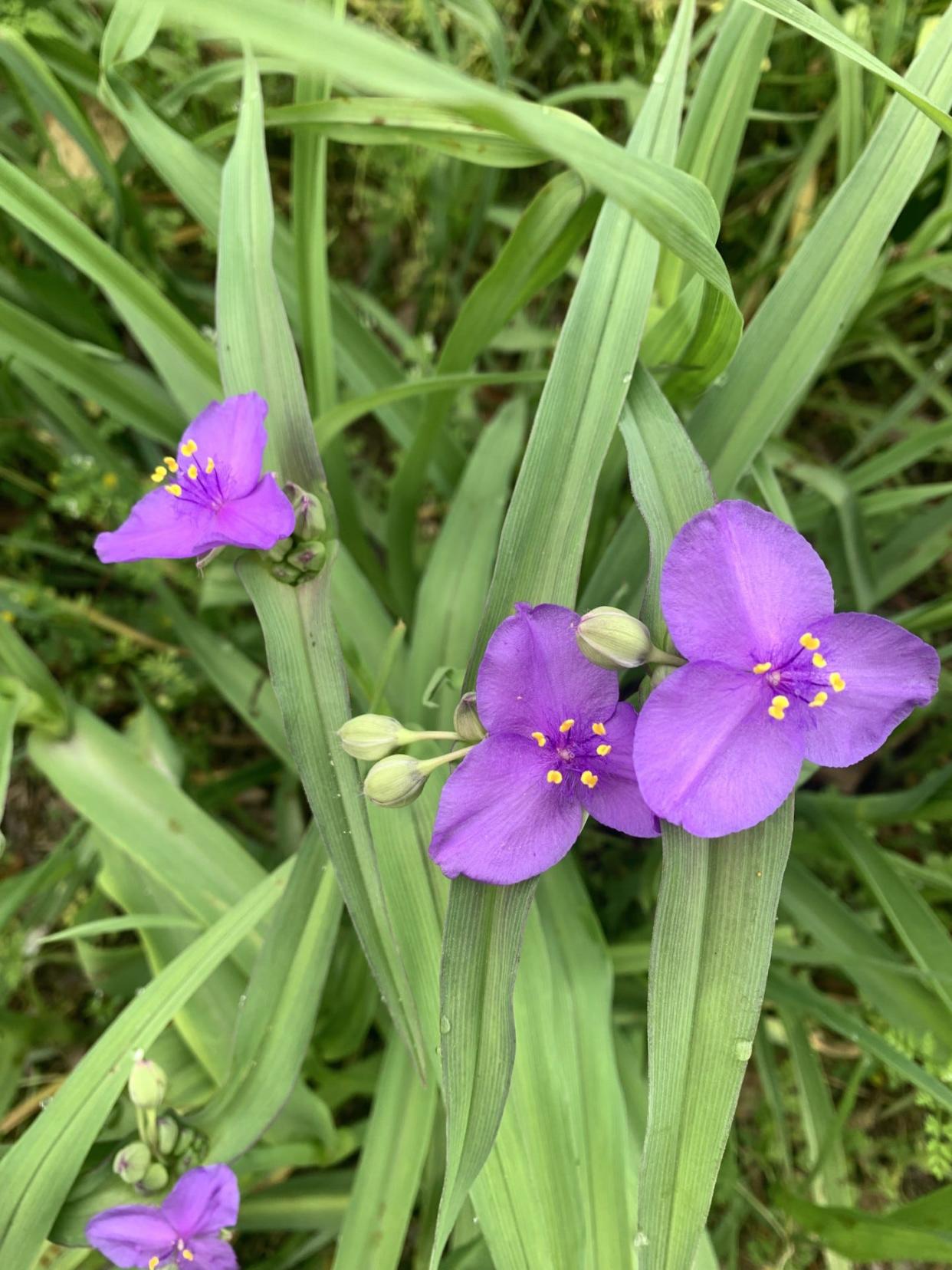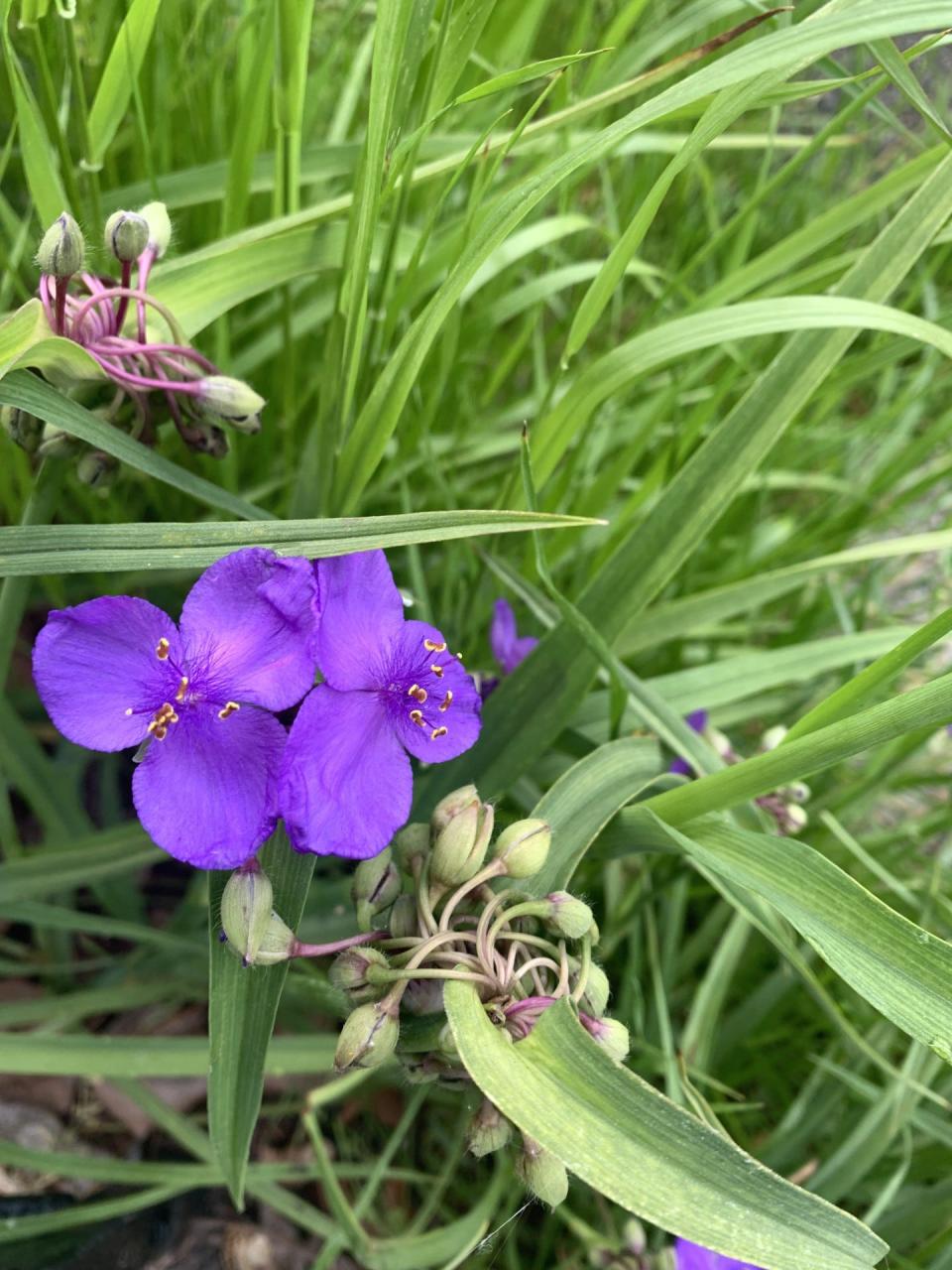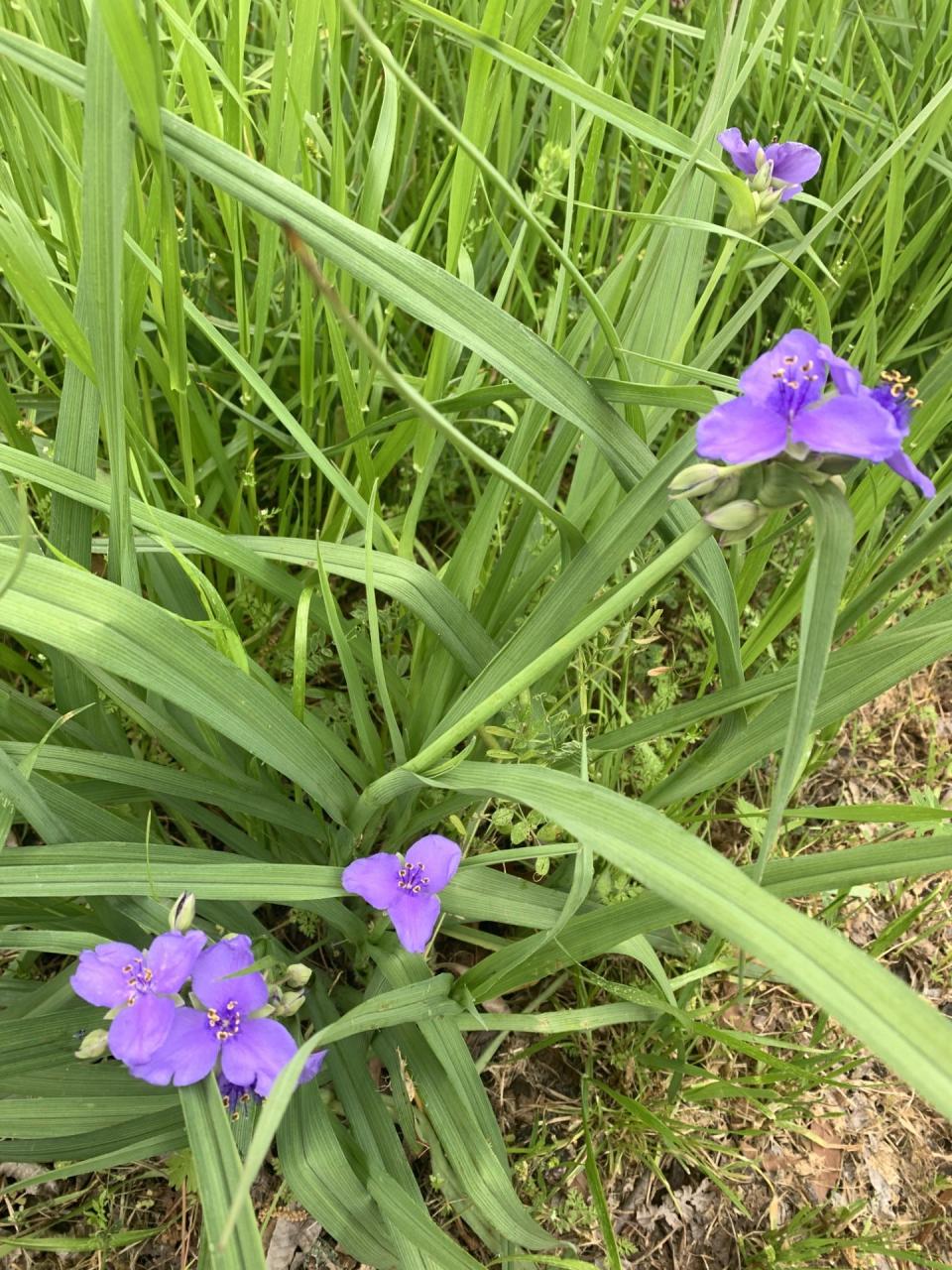Plant these wildflowers in Wilmington landscapes when you can't mow the yard

I bought my new old house in downtown Wilmington this past January. While settling into the indoor spaces through winter, I’ve enjoyed watching the yard wake up this spring. The house had been “staged” with some new shrubs and mulch – mostly Formosa azaleas planted way too close to the foundation and piled high with way too much mulch - but the lawn areas appeared to be an interesting mixture of grasses and forbs. I’m an advocate of polyculture lawns for the “wildlife friendly” nature versus the environmentally barren monoculture of a single named variety of turfgrass.
Adhering to the “No Mow March” principle to support pollinators, I was delighted to watch the “wildflowers” emerge. Some native species, some not – but the overall variety of textures and colors has produced a “meadow-look” landscape in an urban small yard setting. I scout and remove any species known to be invasive, evaluate the location of any considered a nuisance plant, and aim to showcase and celebrate the top performing native plants.

Among those top performers I have noticed is the Spiderwort, Tradescantia virginiana https://plants.ces.ncsu.edu/plants/tradescantia-virginiana/. According to the North Carolina Extension Gardener Plant Toolbox, “Virginia Spiderwort is a herbaceous clump-forming perennial in the dayflower family that is native to the eastern and central USA and is found in the Piedmont of North Carolina. The plants spread by underground stems forming clumps and grow 2-3 feet tall by 1 foot wide. It can be found in moist prairies, fertile woodlands, open woods, meadows, hillsides, stony bluffs, stream banks, and along roadsides.
"In spring the three-petaled flowers appear and last for a day but new ones open daily in terminal clusters. Flower colors range from blue to purple to pink. The foliage may die back in the heat of the summer but returns in late summer to fall and often reblooms.
"Virginia Spiderwort prefers moist to wet fertile sites but adapts to average garden soils in sun to shade. Provide additional water during dry periods. Use in a naturalized or woodland area, along a stream or pond, in a rain garden or the border of a native/pollinator garden.”

Although the neon purple-colored flowers only last a day, the succession of bloom from the flower clusters provides a few weeks of showy color. Held upright on tall stems, these clumping perennial plants have attractive lily leaf evergreen foliage. I have noticed that the bloom stalks make great cut flowers with a succession of bloom. If you want to add some of this easy-to-grow flowering native, find a friend or neighbor that has a clump and ask to help lift and divide in the spring or fall.

Lloyd Singleton serves as the director for NC Cooperative Extension – New Hanover County Center and Arboretum. Lloyd can be reached at 910-798-7660 or lsingleton@nhcgov.com. The gardens are located at 6206 Oleander Drive in Wilmington and are free and open daily from 8 a.m. – 5 p.m.
This article originally appeared on Wilmington StarNews: Plant these wildflowers in Wilmington, NC, when you can't mow the yard

